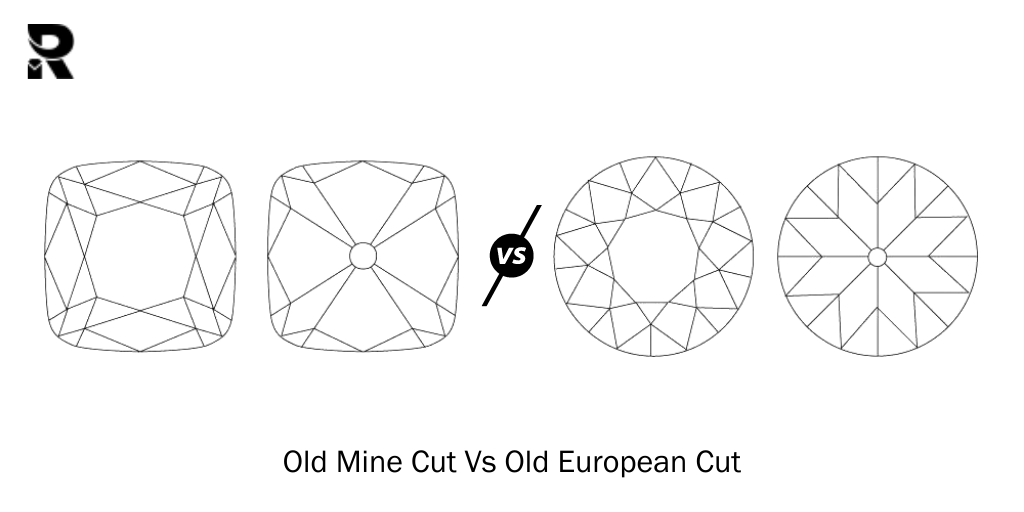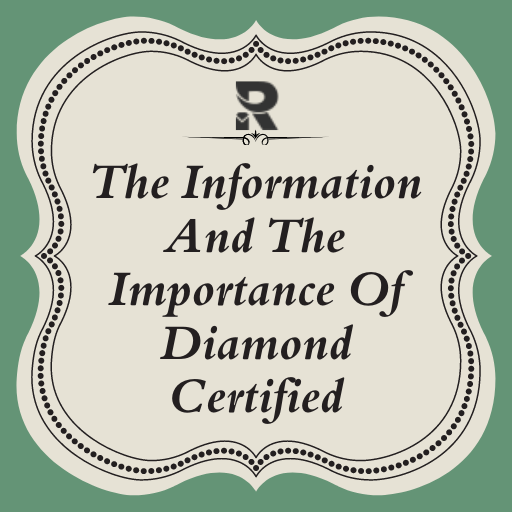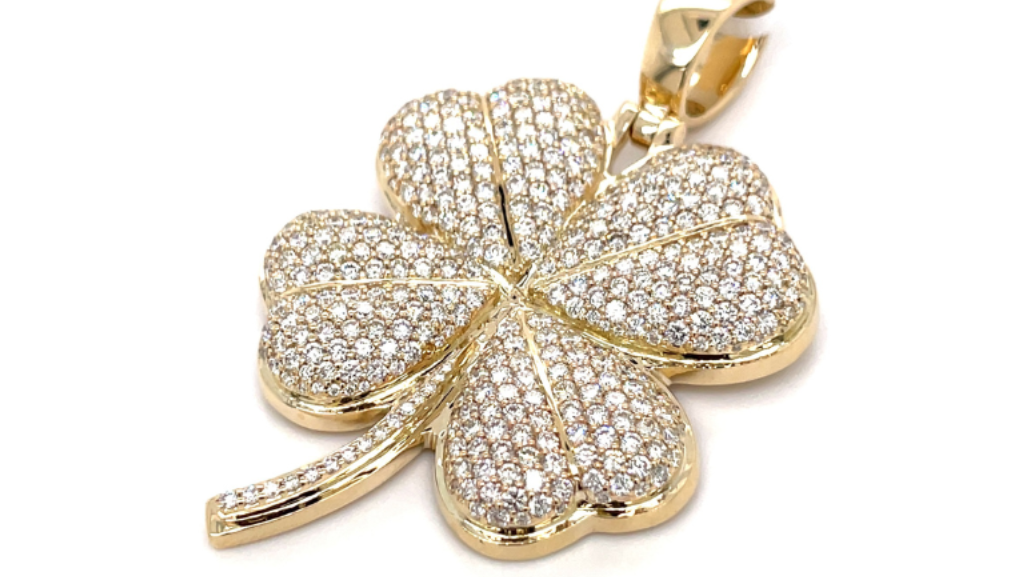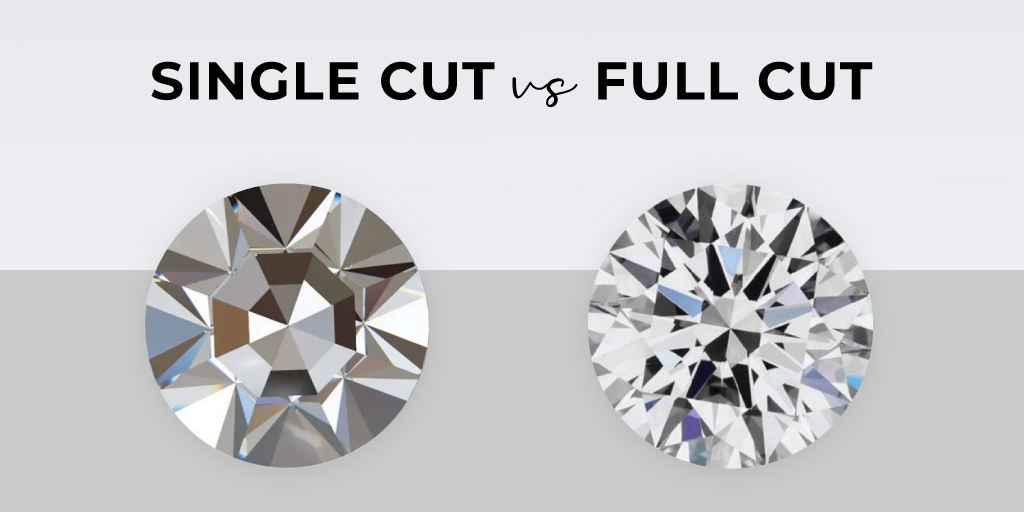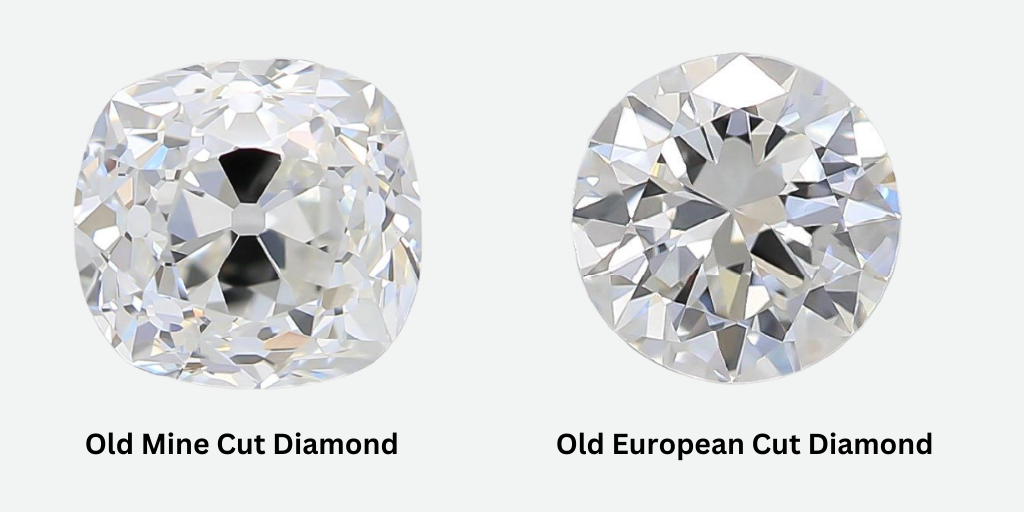
For ages, diamonds and diamond jewelry have been given as a token of love and commitment. Under the surface of the earth, diamonds are ordinary minerals that, over time transform into symbols of resilience due to extreme heat and pressure.
Diamonds are more than just beautiful stones; they represent deep human feelings and ideals, and they are worn by chivalrous figures throughout history. They have been handed down as treasured heirlooms generation after generation, acting as symbols of unwavering love and family devotion.
Today there are different cuts of diamonds available and in this blog, we shall discuss the same. Majorly we shall be focussing on the old mine cut diamond and old european cut.
The old mine cut and old european cut are two such detailed cuts that for a long time were a trend in the diamond industry. In this guide provided by RRP, you get to learn about antique cuts with a special emphasis on old mine cut vs old european cut, a detailed comparison of both, and what each has to offer.
What are Antique Diamonds?
Antique diamonds are stones that have been cut in distinctive styles that were popular between the 1300s and 1930s. Antique cut diamonds can be found with collectors or in museums.
They have a deep charm, with larger facets, open culets, and irregular shapes. A glance inside the culet reveals the true nature of these diamonds.
Antique diamonds, with their rich history and alluring charm, have a softer, more subtle shine than modern cuts. These diamonds, which range in color from J to O and were initially intended for illumination, thus frequently appearing whiter than graded.
Beyond documentation, these stones are valued according to their age, cultural significance, and unique beauty; prices are determined by factors including carat, color, clarity, and historical resonance.
What is an Old Mine Cut Diamond?
The old mine diamond cut originated around the 18th century. Their origin can be dated back to the 18th century. The most extensive use of the antique old mine cut diamond can be seen in the Georgian era which is from the early 1710s to the late 1830s and the Victorian era which is from the late 1830s to early 1900s.
This was also the time when most of the diamonds were sourced from mines located in Brazil and India. The diamonds received the name ‘old mine cut’ because all these diamonds were cut in a particular style. During its reign, the old mine cut was a trend that everyone wanted to be a part of from the aristocracy to the royalty.
Following the transformative South African diamond discovery, the “old mine” cut emerged as a distinguished diamond type.
Originating from the mines of India and Brazil, predating the African finds, these diamonds, shaped through advanced cutting techniques, gained popularity for their captivating and sophisticated appearance.
As they were limited in numbers and had lower color grades compared to contemporary stones, they reflected a bygone era’s charm. The term “old mine diamond” surfaced in the late 18th century, highlighting gems from African, Indian, and Brazilian mines.
Notably, the square and elongated shapes of Indian and Brazilian diamonds, cut for intense sparkle, glorified the elegance of this historical period.
What is Old European Cut Diamond?
The european cut descended after the popular old mine cut. This cut was developed when nuanced and high-level technology was developed for diamond cutting.
Diamonds were cut, sourced, and crafted entirely by hand, using only the most fundamental of manual procedures, in the eras before the current one.
The old european cut diamond also emerged around the time when a new source for diamonds was discovered, which was South Africa. The Old european cut diamond saw increased fame from the late nineteenth century to the early 20th century.
The “european cut” term came to life because it was initially adopted by european diamond cutters, and quickly became a popular style.
Craftsmen favored this cut because it enabled them to shape diamonds into a round form without losing much of the original rough stone.
This classic cut, originating in the 19th century, was characterized by a smaller table and larger culet, emphasizing brilliance over fire. Its simplicity and ability to retain more of the diamond’s weight contributed to its enduring appeal. As cutting techniques evolved, the european cut laid the foundation for the modern brilliant cuts we see today.
The cut focused on carat weight rather than brilliance. The old european cut is the father of the modern round brilliant cut. And the descendent of the precious old mine cut diamond. These qualities make the old mine cut diamond ring highly in demand.
A Comparison Between the Old Mine Cut and the Old European Cut
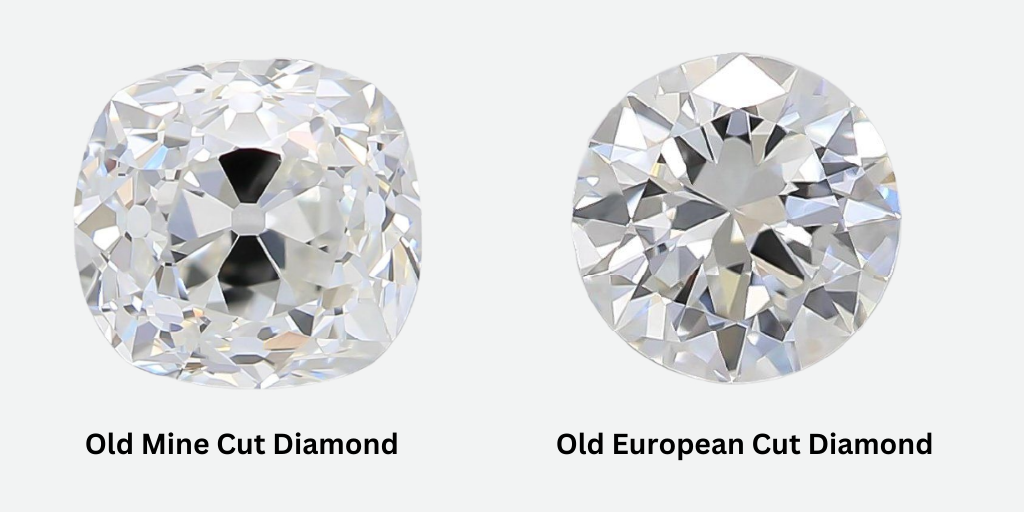
The old mine cut and the old european cut though they originated at different times in history have many stark differences. Here is a detailed comparison between the two cuts.
Shape: The old mine cut is now classified under the cushion cut diamond as it has a square-shaped girdle with additional rounded corners whereas the european cut diamond is a perfect round cut diamond. Because of their extremely geometric shape, the old mine cut is also known as the chunky cushion cut diamond now.
Table and Culet: The table is the top flat surface of the diamond and the cutlets are small pointed surfaces that form at the bottom of the diamond. The old european diamond cut has a large table and small cutlets. Their faces are large and a bigger percentage of their girdle is the diameter of their table.
Crown and Pavillion: Crown of the diamond is the slanting area on the top side of the diamond, just below the table. The pavilion is the slanting surfaces that join together to form the culet. The old european cut has a higher crown, larger and steeper pavilions. The diamonds were also deeper because of this reason. Whereas the old mine cut has a comparatively less depth, shorter pavilions, and shorter crowns.
Girdle: The Girdle is the line that runs on the circumference of the diamond. This is what gives the diamond its shape when looking from a top view. The girdle separates the bottom and top of the diamond which is the pavilion and crown respectively. The old european cut diamond has a comparatively wider girdle because of its round shape, and the old mine cut had a narrower girdle because of the squarish shape.
Facets: Facets are the flat surfaces on a diamond. The average old mine cut has 58 facets typically whereas the traditional old european cut has 64 facets. The facets of the old mine cut are flatter and larger whereas the old european cut has smaller facets.
Also read: Difference between Full Cut and Single Cut Diamonds – Which one to choose?
Where Can You Buy Old Mine or Old European Diamond From?
When it comes to purchasing exquisite diamonds like the Old Mine Cut or Old European Cut, RRP Diamonds stands out as the ideal destination. Renowned for its commitment to quality and transparency, RRP Diamonds ensures direct sourcing, eliminating intermediaries and providing customers with the best prices.
By choosing RRP, buyers benefit from a trusted source, free from commission-related complications. The company’s reputation for delivering authentic, historically significant diamonds, coupled with competitive pricing and a hassle-free buying experience, makes it the preferred choice for those seeking timeless beauty without compromise.
Hence, if you are looking for an old mine cut diamond engagement ring or even an old European cut diamond ring, look no further as RRP has got you covered.
Conclusion
In conclusion, this insightful guide presents the fascinating world of antique diamonds, particularly the old mine cut and old european cut. As symbols of enduring love and historical significance, these diamonds possess unique characteristics. The old mine cut, with its asymmetrical charm, reflects a bygone era, while the old european cut showcases precision and symmetry.
Whether you prefer old mine or old european cut natural single diamond or old european Melee diamond all have a timeless allure. RRP Diamonds emerges as the optimal choice, offering these diamonds at competitive prices and ensuring a trustworthy, direct buying experience. Please note that you can use the promo code to avail discount for any purchases from our website.
FAQs
1. Compare old european vs old mine cut diamond?
The primary distinction lies in shape; old mine cuts are square or cushion shaped, while old european cuts are round. Old mine cuts often have a larger culet and more asymmetry. Another difference is the price range wherein the old mine cut is generally cheaper compared to european cut.
2. What are old cut diamonds called?
Old cut diamonds are also referred to as antique or vintage diamonds, as they were characterized by unique cutting styles popular between the 1300s and 1930s.
3. How can you tell if a diamond is mine cut?
Mine-cut diamonds typically have a squarish or cushion shape, smaller tables, larger culets, and exhibit more asymmetry compared to modern cuts, reflecting the techniques of their historical origin.
4. Which is better: an old mine cut diamond vs an old european cut diamond?
The preference depends on personal taste. Old mine cuts are known for asymmetrical charm, while old european cuts offer symmetrical precision. Both possess a timeless allure, and the choice comes down to individual aesthetic preferences.
5. A price range comparison; old mine cut vs old european cut?
The price range varies based on factors like carat weight, cut, clarity, and color. Old mine cuts are often 5-15% less expensive than old european cuts, but specific prices depend on individual characteristics.
6. Where to buy old mine cut, old european cut diamond from and what to consider before buying?
Purchase from reputable jewelers like RRP Diamonds, ensuring direct sourcing and transparency. Consider factors such as certification, cut quality, and personal preferences for a satisfactory and informed old mine or old european cut diamond purchase.
